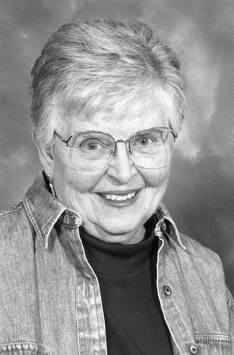Rabbitbrush Rambler: Governor McIntire

It’s Colorado Day and what better time is there to learn something about one of our state’s governors with a link to the San Luis Valley. Though not as well known as Billy or Alva Adams, Governor McIntire was an interesting character.
He was from Pittsburgh, graduated from Yale College in 1873, married Florence, and had a child before coming to Colorado. A lawyer by profession, the family lived in Denver for a short time where he established contacts that aided his future career.
In 1880 when he moved to Conejos County, he had not yet acquired the pince-nez and the comb over that would appear later in the governor’s formal portrait. The San Luis Valley looked like a promising choice for a law office, with Summitville’s mines nearby, the D&RG’s construction to Durango, towns growing, and agriculture flourishing. He was elected the county judge in 1884, and in 1891 he was appointed to be judge of the 12th Judicial District.
Having acquired property on the south side of the Conejos River at McIntire Spring northeast of Sanford, he raised cattle there, built an adobe house, and had another child. He stocked trout at his spring, where his friends from Denver enjoyed catching trout and playing cards after a hard day of fishing. Many of Albert’s descendants still live in the Valley. (When I visited McIntire Spring a few years ago with a BLM tour, BLM was managing the public land, the pond and lush grass around the spring were flourishing, livestock was grazing on drier grassland, the fenced-off McIntire’s house were eroding away, and a rattlesnake was attracting our attention.)
McIntire was nominated for governor on the Republican ticket in 1894, and in the election he soundly beat the incumbent Populist Governor Davis Waite who had fallen from favor. This election marks the first time that Colorado women were allowed to vote in a Colorado State election. McIntire, the ninth governor of Colorado, served in 1895-1897.
While he was in office, the somewhat progressive Republican backed services for the insane and for women, but temperance remained an issue that was less popular with his male supporters than with the WCTU. It is telling that McIntire gave a friend and probably other political supporters a silver whiskey flask as a Happy New Year’s gift in 1896. (The ornate flask is advertised in an antique dealership’s catalog on the Internet.)
During his two years in office, the entire state and especially Leadville were suffering the blows inflicted by the Panic of 1893. When the Western Federation of Miners’ union at Leadville went on strike, Governor McIntire held back for a while but then responded to the mine owner’s demands and sent the Colorado Militia to Leadville, where tents were set up at Camp McIntire. Labor troubles at coal mines in Huerfano County also required action from Denver. Another event during his tenure that attracted considerable public interest and newspaper print about capital punishment was the hanging at the penitentiary of a man named Ratcliff who had murdered three members of a local school board in rural South Park. McIntire denied clemency for Ratcliff.
And then, when his term in office ended, McIntire disappeared from Colorado history, but within a couple of few years he had reappeared in Washington State, married to Ida Noyes McIntire, M.D., who had been a physician and an activist in Denver. He opened a law office in Seattle and then relocated a few miles away on Puget Sound at Everett, while his wife opened a hospital and was a celebrated activist.
With the gold rush in Alaska and the Yukon attracting throngs to the Northwest, Albert became the president and manager of the Alaska-Washington Gold Dredging Company, which operated at Nome. There, prospectors on the beach were shoveling buckets of sand with traces of gold, but better-equipped enterprises like McIntire’s operated dredges just offshore.
While living in Washington, the McIntires divorced. Ida remained there, but Albert moved back to Colorado and died in Colorado Springs in 1935.



